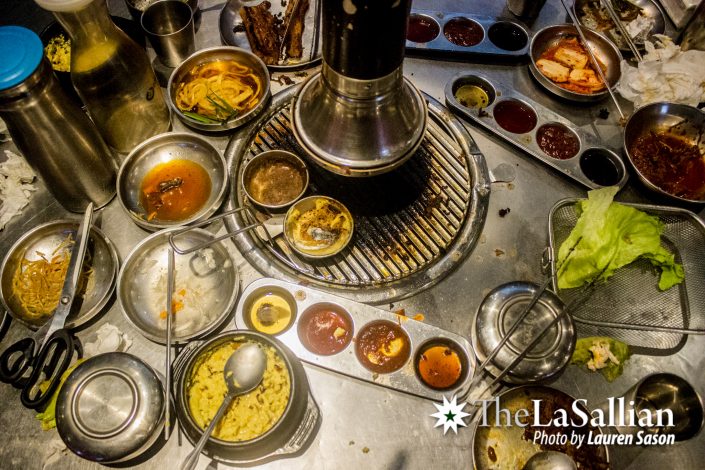Every year, approximately a third of the world’s food is lost or thrown away, according to the Food and Agriculture Organization of the United Nations. In the Philippines, efforts to reduce food waste have been initiated but not all have been successful.
Although Republic Act 9003 or the Ecological Solid Waste Management Act of 2000, which provides necessary institutional frameworks for an ecological solid waste management program, has already been enacted, its implementation is far from being realized.
“I believe that for those who can afford to buy more than what is needed, consumerism has taken over with the idea that there is an abundance of almost every commodity and to waste resources [has become] an [acceptable practice],” states Melody Melo-Rijk, World Wildlife Fund-Philippines (WWF) Project Manager of Sustainable Consumption and Production in the Philippines regarding the continually mounting and wide disparity between food production and consumption in the country.
When Samgyupsalamat—one of the country’s first unlimited Korean barbecue (KBBQ) restaurant chains that first opened its doors near DLSU in 2013—started offering unlimited servings of samgyeopsal to its customers, it quickly gained popularity among students from nearby universities, jumpstarting the unli-KBBQ trend.
Underneath this exciting “samgyup” craze, lies a glaring problem: the irresponsible disposal of leftover food from food establishments and household kitchens.
At what cost?
With prices ranging from P300 to P550, customers can order unlimited portions of an assortment of meat, complemented by a myriad of Korean side dishes, such as kimchi and seasoned soybean sprouts—common staples in most samgyeopsal restaurants. But an inevitable question arises: where do the leftovers go? According to Mella*, a branch manager of a samgyeopsal establishment near Taft Ave., side dishes—specifically those with vegetables—are most prone to food wastage.
Mella explains that some customers do not eat the vegetable sides at all. Meat leftovers do not seem to be a problem though, she notes, as most are consumed by customers. She reasons that this is due to their establishment’s policy that prohibits leftovers; side dishes are an exception, which she believes contributes to the wastage.
“Magkasama na ‘yung nabubulok ‘tsaka hindi nabubulok doon, sa tingin ko more than 10 kg pa talaga kasi mabigat ‘yung mga pagkain na tira-tira,” Mella elaborates on the extent of wastage regarding the sides.
(Taking into consideration both biodegradable and non-biodegradable wastes, I’d estimate that it would be around 10 kg or more because the leftovers are in quite large quantities.)
This is further supported by Tanya Florendo, a third year Multimedia Arts student from De La Salle-College of St. Benilde, who admits that she leaves behind the side dishes whenever she eats at a samgyeopsal restaurant. Ken Hamoy (CS-CSE, ‘19) also shares a similar account, adding that while he rarely leaves any leftover meat, the same cannot be said about the side dishes.

Ineffective band-aid solutions
Although many KBBQ restaurants have the practice of charging customers for leftovers, the prevalence of such rules in almost every unli-KBBQ establishment is only a temporary remedy; it fails to alleviate the inherently unsustainable business model of most, if not all, of these establishments in terms of food wastage.
Regardless of these lapses, new methodologies are being developed to rethink unsustainable practices in the food industry and provide more effective solutions to address food wastage and inefficient waste disposal practices. In an initiative led by the World Wildlife Fund and American Hotel and Lodging Association last 2017, staff from notable establishments such as the Hilton, Hyatt, and InterContinental Hotels Group—among others—were trained in measuring food waste outputs daily, redesigning menus to limit food waste, and raising awareness among customers.
Their efforts ultimately saw a reduction in food waste by 15 percent—a small yet significant improvement. But the results showed that it takes the entire management team to push for a culture shift committed to address excessive food waste and to encourage further waste reduction and management.
Efforts toward sustainability
Granted that these restaurants employ certain business strategies, KBBQ establishments like those of Mella’s are still undoubtedly wasteful and uneconomic.
According to Melo-Rijk, there are “many underlying costs that are hidden beyond just paying for disposal costs”—acknowledging that unli-KBBQ restaurants employ effective albeit wasteful business strategies, “You are losing money if you continue not managing your resources and the waste you produce. Wasting food means wasting energy, water, and other resources that went into producing them.”
To aid in alleviating this problem, she encourages restaurants and other food establishments to foster healthy relationships with farmers through farm-to-table practices, where restaurants would directly source food from farmers.
Furthermore, Seth Gabon (IV, CS-CSE) suggests that apart from the inclusion of meat in the ‘No Leftovers’ policy, restaurants should also start including side dishes as they compose most, if not the entirety, of the food waste generated by such establishments.
A possible solution to minimize food wastage is to donate leftover food to food banks. Overall, further measures are needed to address this glaring issue and spread more awareness amid the surging popularity of such establishments and its negative repercussions with regards to food wastage.
*Names with asterisks (*) are pseudonyms.
